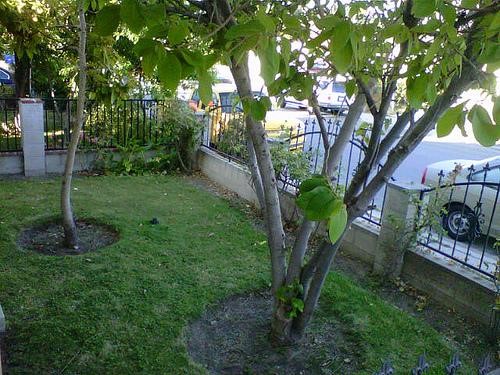 (412) 364-9114
(412) 364-9114

Trees and plants can add visual elegance to any front yard. Oftentimes, many homeowners neglect to consider the damage that certain plants may cause to their sewer systems regardless of how serious these issues may become in the future. In order to protect your home from potential sewage back ups and time consuming sewer line repairs there are a few pieces of information that you should take into account before you begin planting. To further supplement your knowledge, be sure to check out our blog post about signs of a sewer line problem.
Your home’s sewer is connected to the main sewer by a pipe that runs from your home, through your property to the sewer main. This pipe is called a lateral. Blockages in the lateral are always bad news for the homeowner. These blockages can slow or stop the waste from flowing from your home to the sewer main. When this happens, sewage may begin to back up through the lowest opening in a home such as a downstairs toilet or sink creating a huge mess and lots of hassle. Blockages in your pipes can come from a number of sources, but the most common source of sewer line distress is caused by tree roots. Sewer lines are full of water and essential nutrients to fertilize growing trees. This excess of nutrients attracts tree roots toward the area where sewer lines run and this can put all sewer lines at risk. If there are cracks in the lateral pipes from age or shifting soil, the roots from your trees will grow directly into the pipe itself.
Just because there is a lateral running from your house will not prevent you from planting trees. With proper planning many issues with the sewer lines can be avoided altogether. The first step in preventing issues with your lateral sewer line is locating where it runs through your property. Having a general idea of where the sewer line runs can help you plan out more prudent options for future planting, and can also help you assess whether any trees or shrubs you currently have in your yard may be a risk to your lateral line. One of the easiest ways to find your lateral is to refer to the survey documents you likely received when you purchased your home. If you do not have these documents your city’s public works department may be able to provide copies of them for you to review.
Once you have located your lateral line, it is important not to plant any trees or other shrubs near them. When deciding where to plant your future tree, it is also important to note the type of tree and the subsequent root system to aid in protecting your lateral line. It would be wise to choose a tree with a deeper growing root system, rather than a shallow root system that spreads wide. There are a few problem species of tree that should mainly be avoided such as poplars, willows, fig trees and rubber trees.
After you’ve selected a tree, make sure to follow proper planting procedures. Make sure to dig a hole that is deep enough, but not too deep. If the hole you’re planting in is too shallow, the roots of your selected tree may spread wider increasing the possibility that they will meet, and then penetrate, the sewer line. If the hole is too deep, you run the risk of disease of decay infecting the tree’s root crown, killing the tree you worked so hard to plant.
If you take these few steps into consideration before beginning your front yard renovation project it may help you to preserve your lateral line. Keeping your sewer lines free of roots can save you many future headaches. However, if you do run into problems, call your professional plumber for help.